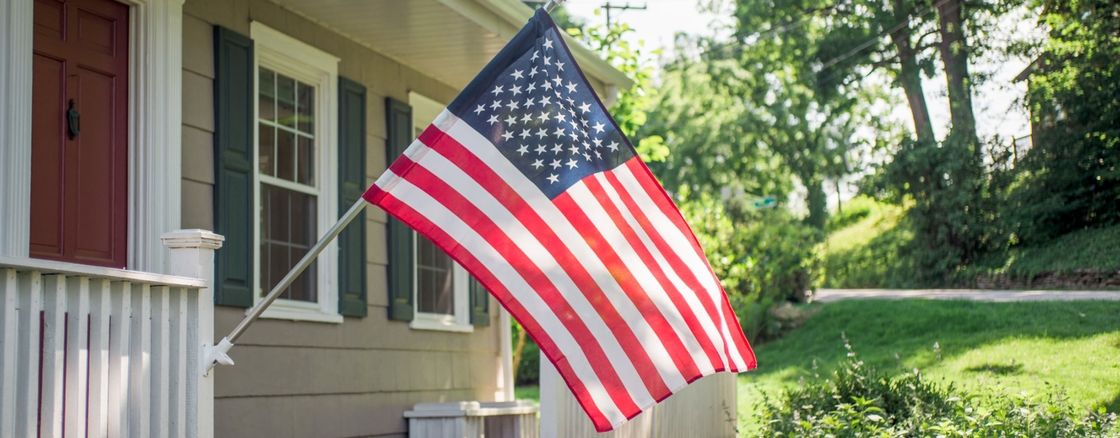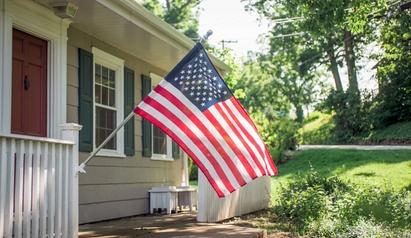VA Closing Costs
Written by:
Own Up Staff
Own Up is a privately held, Boston-based fintech startup that is on a mission to make sure every home buyer receives a fair deal on their mortgage by unconditionally empowering individuals with customized data, personalized advice, and unprecedented access to mortgage lenders to create better financial outcomes and simplify the home financing experience.
See full bio

Fast Links
A home is the most expensive purchase most people will make in their lives, so finding a good deal is paramount. Roughly one in five home buyers is a veteran or active-duty service member according to the National Association of Realtors, and these buyers are likely to consider a VA home loan. In fact, 77% of active-duty military and 58% of Veterans used a VA home loan to purchase their house.
Veterans, active-duty service members, certain National Guard and Service members, and surviving spouses of some veterans qualify for VA home loans. For these loans, the VA is either the lender (in the case of direct home loans) or guarantees a mortgage from a private lender (in the case of VA-backed home loans). Closing costs for these loans are different from closing costs for loans not backed by the VA.
Types of VA Loans
The four types of VA home loans are:
- VA direct home loan: The Native American Direct Loan Program (NADL) provides loans directly to Native American veterans or veterans and their spouses. These loans allow you to buy, build or improve a home on federal trust land.
- VA-backed purchase loan: These loans are offered by a private lender but backed by the VA and require no down payment and may have better terms and interest rates than private loans.
- Interest Rate Reduction Refinance Loan (IRRRL): These loans provide a refinancing option for existing VA-backed loans.
- Cash-out refinance loan: This loan allows borrowers to take cash-out for home equity or refinance a non-VA-backed loan into a VA-backed loan.
Loan Terms
VA loans are primarily different from loans from private lenders because nearly 90% of them require no down payment or mortgage insurance. The only situation where a down payment is required is when the sales price is higher than the appraised value. For a traditional loan from a private lender, the down payment is 20% of the purchase price or private mortgage insurance (PMI) is required.
VA Loan Funding Fee
VA loans require a VA funding fee, and this fee is the largest cost amongst all the closing costs for a VA loan. Closing costs for VA loans are typically 2% to 5% of the purchase cost. Except for the funding fee, which can be rolled into the loan, all other closing costs must be paid at closing.
The VA funding fee offsets the cost of the VA’s loan guarantee program and charges depend on the purchase price and type of loan being financed. If you receive VA disability compensation or are the surviving spouse of a veteran who received disability compensation, you may be exempt from paying the funding fee. Borrowers can choose to either pay the full fee at closing with other closing costs or finance the fee as part of the loan.
VA funding fees for VA-backed purchase and construction loans are listed below:
Funding Fees for VA-Backed
Purchase and Construction Loans
First use
Down payment of
VA funding fee %
Less than 5%
2.3%
5% or more
1.65%
10% or more
1.4%
After first use
Less than 5%
3.6%
5% or more
1.65%
10% or more
1.4%
Source: VA.gov
The funding fee applies to the loan amount, not the purchase price of the home. For a $300,000 home (The average VA loan amount for Quarter 3 of 2021 was $309, 816), the funding fee in different scenarios would be as follows:
- A down payment of 10% for either a first-time or repeat VA borrower:
$270,000 x 1.4% = $3,780
- A down payment of 5% for either a first-time or repeat VA borrower:
$285,000 x1.65% = $4702.50
- No down payment for a first-time buyer: $300,000 x 2.3% = $6,900
- No down payment for a repeat buyer: $300,000 x 3.6% = $10,800
Funding fees for other VA-backed loans are listed below:
Loan type
VA funding fee
Cash-out refinancing, first use
2.3%
Cash-out refinancing, subsequent use
3.6%
Native American Direct Loan, purchase (NADL)
1.25%
Interest Rate Reduction Refinancing Loans (IRRRL)
0.5%
Manufactured home loans (not fixed in place)
1%
Source: VA.gov
Closing Costs for VA Loans
While the VA funding fee is generally the largest of the allowable closing costs and fees associated for VA loans, it is not the only one. There are seven other allowable fees:
- Loan origination fee: Charged by mortgage lenders at closing to cover administrative costs. This fee includes processing fees, documentation fees, tax service fees and wire transfer fees. Cost: About 1% of the loan amount. For a $300,000 house, it would be $3,000.
- Loan discount points: Purchased by borrowers to get a lower interest rate than currently available in the market. Up to two discount points, or 2%, is considered a reasonable charge. Cost:
- Credit report. Cost: $50-65
- Appraisal fee. Cost: $400-450
- Hazard insurance and real estate taxes: The lender collects these advanced payments at closing to pay taxes and insurance. In a mortgage document, they are referred to as an escrow account. Cost: Depends on home purchase price and area tax rates
- Title insurance: A fee charged to ensure there are no outstanding liens against the property. Cost: $600-800
- Recording fee: To record your deed with county records. Cost: $20-75
- Total closing costs depend on many factors including the lender, whether the funding fee is wrapped into the loan, the size of the loan origination fee (which is based on purchase price) and the amount of insurance and taxes (which are based on purchase price and tax rates).
Closing costs can be reduced if sellers agree to pay some of the buyers’ closing costs. Sellers always pay real estate commissions, a brokerage fee, a buyer broker fee and a termite remote (unless it is a loan refinance). Sellers are allowed to pay buyers’ closing costs equal to up to 4% of the total home loan. This total cannot include any discount points purchased.
Nationally, closing costs for VA loans average 2%-5% of a home’s purchase price. For a $300,000 loan, that would be $6,000 to $15,000. The chart below shows the average closing costs for a VA loan in 2019 as compared to a conventional loan and FHA loan, showing that VA loans had higher average closing costs than conventional loans but lower closing costs than Federal Housing Administration (FHA) loans.
Average closing costs
Average loan amount
Closing costs as a % of the loan
VA
$5,904
$293,920
2.01%
FHA
$7,875
$226,019
3.48%
Conventional
$4,355
$312,681
1.39%
Source: FFIEC Home Mortgage Disclosure Act
The average loan amount is heavily impacted by the mortgage interest rate, which in turn is heavily impacted by the borrower’s credit score. Data from the Consumer Financial Protection Bureau shows that in 2019, the median credit score of VA borrowers buying a home was 712, compared to 757 for borrowers using a conventional loan and 663 for borrowers using an FHA loan.
Minimum Property Requirements
Government-backed loans, including VA loans, generally have minimum property requirements that are stricter than a traditional loan. The VA guide outlining minimum property requirements for a VA loan is 52 pages long and includes the following:
- Any lead-based paint in a house built before 1978 must be remediated.
- If water well is shared, there must be enough water for all units at the same time
- Roof is free of leaks and any repairs done must include removing old shingles with three or more layers before installing new ones.
- Access to the backyard must be provided without passing through any other living unit.
- Crawl spaces must have natural ventilation, are free of debris and have enough room to make repairs.
Due to these stricter requirements, distressed properties that haven’t been properly maintained may fall short of VA minimum guidelines for issuing and backing home loans. Non distressed properties in need of some repairs might also fall short of the guidelines and require repairs, which is why some sellers refuse potential buyers using VA loans or VA-backed loans.
Veterans who successfully navigate the home loan process and secure a VA home loan could end up in their dream home. Veterans interested in learning more about securing a loan backed by the VA can schedule a review call at the link below.


